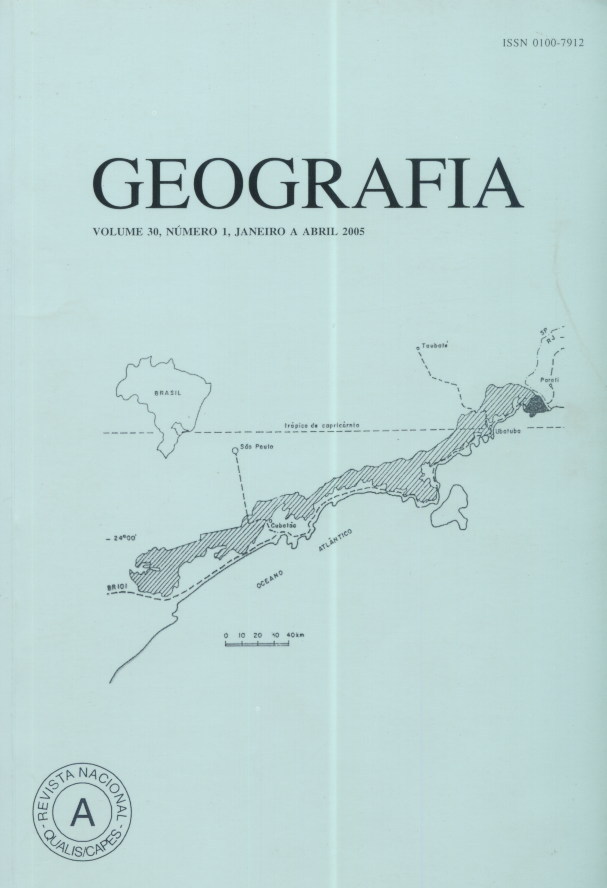The variations of pluvial rhythm in the west of São Paulo State: genesis and erosive impacts
Abstract
Based on climatical data – especially on rain data – registred in the West of São Paulo State, area limited by Paranapanema and Parana rivers and located between 21º and 23º south latitude and 50º and 53º west longitude, this paper shows how to use Sorre’s definition of climate (1951) and Monteiro’s paradigm of the rhythm (1971), in the rainfall impacts’ study that could be provoking soil erosion. It’s one geographycal analysis of rainfall erosivity, conjugating two climatical concepts: the separatist method and the synthetical method of air masses and weather types, according to Pédelaborde (1991), and that also considers Péguy’s explanation (1970), about the heavy showers in the temperate areas. As the West of São Paulo State is located in one tropical area, this research uses the rhythm analysis graphs of three “pattern-years” to represent daily and hourly variations of the main climate’s elements, water balance and rainfall episodes, connecting them to the regional atmospheric dynamics, in one first attempt to define the heavy showers’ occurency in there, and to contribute for its environmental planning. Key-Words: West of São Paulo’s State; Rainfall; Erosion; Climatic Rhythm; Environmental Planning.Downloads
Published
Issue
Section
License
The authors maintain the copyright and grant GEOGRAFIA the right of first publication, with the articles simultaneously licensed under the Creative Commons BY 4.0 License, which allows sharing and adapting the articles for any purpose, as long as appropriate credits and provisions of image rights, privacy or moral rights. Other legal attributions can be accessed at: https://creativecommons.org/licenses/by/4.0/legalcode.en.
Geography, Rio Claro, SP, Brazil - eISSN 1983-8700 is licensed under the Creative Commons BY 4.0 License.





